Film Unframed - much more than a History of Austrian Avant-Garde Cinema
A Review by Hermann J. Hendrich
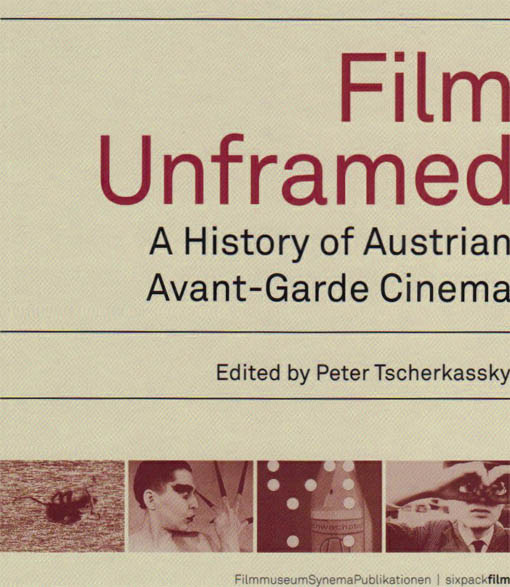
A Review by Hermann J. Hendrich

A very short history called "Ground Survey. An initial Mapping of an Expanding Territory" on 28 pages only by Tscherkassky, lists the really important events, persons and films beginning with the mid-fifties in Vienna.
The reviewer has read these pages very carefully, but has only one suggestion: is it really correct, to name only one person for the production of a feature film like Invisible Adversaries, Wien-Film or Die Totale Familie as their originator? As a film business manager, sound engineer, camera man and film trick designer I see a feature film - be it in the avant-garde tradition - as a composite of many creative inputs. without further elaboration I am copying the original list of coworkers in "Invisible Adversaries".
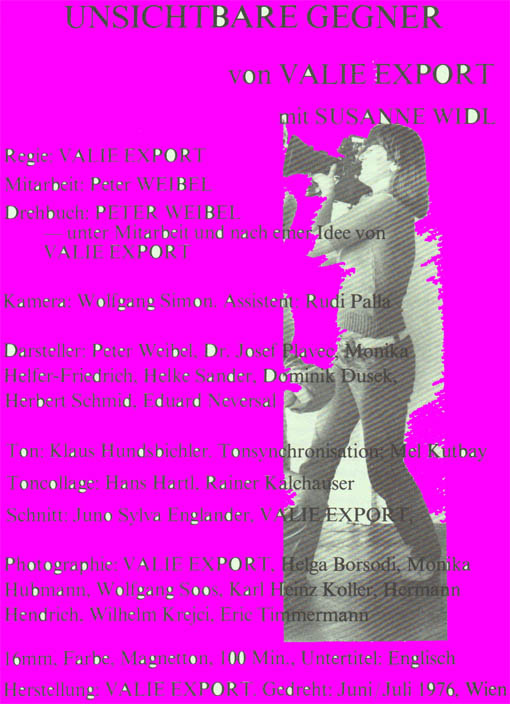
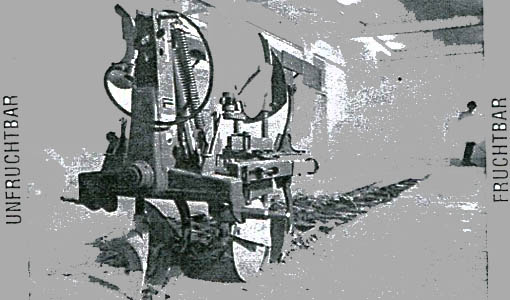
NEUE FLIESEN UND NOMADEN AUSTELLUNG 28.8. - 2.7. 1989 WUK WIEN
The following contributions by Stefan Grissemann "Countdown to Zero. Before the Avant-Garde: Austrian Visionary Film 1951-1955.", Peter Tscherkassky "The World According to Kubelka", Peter Tscherkassky: "The Halted Sun of Ferry Radax" (despite the fact, that 'Am Rand' the semi-documentary film is I like most), Stefan Grissemann "Fundamental Punk. On Kurt Kren's Universal Cinema", are on the high level of filmography to be expected by these authors.
I stumbled about "Shadow Burns. Notes on the Film Work of Marc Adrian" by Norbert Pfaffenbichler. Pfaffenbichler sees the work of Adrian heterogeneous, in as far, as he believes, that there is a difference between his early and later films. In my esteem there is no such difference, I see a continuous development over the decades, showing the increasing mastering of film cutting techniques by Adrian. Since his cutting plans are currently being digitalized at the MUMOK further discussion can be re-enliven. The short stories Pfaffenbichler let us know about the content of most of the short films by Adrian has not much to do with the serious analysis of avant-garde films in the rest of the to book to be reviewed.
On the second column on page 118 Paffenbichler writes: "At the time the artist was in close contact with the Wiener Gruppe…", Adrian was in close contact with H.C. Artmann, Gerhard Rühm and others(I, but this was years before someone invented the term "Wiener Gruppe".(II
What regards Pueblo there are many things to mention, in as far, as Adrian with his enormous intellectual interests was also keen on knowledge in ethnography, due to his wide spread friendships with persons like Feest or Janata; and he had the chance to film events in the South-West of the US as an interested person and as a friend of the tribe. Some of the scenes were filmed at our place in Lower Austria. In this film, however, sections are imbedded which show the mastering in cutting by Adrian.
Stadt-Werk-Statt while the mentioning of the 'Stadtwerkstatt' is correct - but is was not a violent performance, but an exhibition in the WUK.
The galleries floor was not of concrete, but of homogenous wood plates and there was no performance what so ever, unless you want to see the mist generators as creating a performance. The associations of Pfaffenbichler are in line with my experience at that time.
In the short contribution "Expanded Cinemas Exploding" Hans Scheugl gives us a very detailed account and chronology of the second half of the sixties, confirming many of my memories. (III Especially interesting is his interpretation on some of the expanded cinema pieces.
As a creative colleague Scheugl has an unbiased view on those years and is able to put the various works into their dependancy from sources coming from their contemporaries.
Since Peter Tscherkassky has developed a large body of insights into the work of Ernst Schmidt jr (IV. this current essay by him fulfills any expectations one might have to learn the significance of Schmidt oeuvre.
The same holds true in a way about Stefan Grissemann notes on Hans Scheugl: "Time Slice, Space Block. The Synthetic Realities of a Viennese Filmmaker Hans Scheugl." As one of the most serious film critiques in Austria having followed the works of the avant-garde since a long time, his eight pages add to the above mentioned notes of Hans Scheugl for Scheugl's later films.
Maureen Turim's short notes on VALIE EXPORT (eight pages of text) are in the way of feminist hagiography, similar to the monography "EXPORT LEXIKON" by Sylvia Szely, ed. (V. Especially the mentioned Genitalpanik is quite a legendary misunderstanding, the photos were shot by Peter Hassmann and the "machine gun" was brought by the reviewer to the set, Hassmann's studio in an already closed cinema. As Scheugl says in his contribution about Tapp- und Tastkino, this performance should be credited to EXPORT and Weibel. On discussing Invisible Adversaries Turim uses the term: "her film…" As I have already mentioned on Tscherkassky's leading essay a feature film is a work of many creative contributions, and my view of this film - since I was present on many sets, made many advices and finally had to align the real expenditures with the budget - it is a film by VALIE EXPORT and Peter Weibel.
In her article "Two Telephone Books, a Lightbulb and a Glass Plate. How Maria Lassnig's Low-Fi Animated Films Influenced an Entire Generation of Animation Filmmakers" Maya McKechneay gives us a short but precise account of Lassnig's life as an artist and her late public recognition as the leading female painter in Austria. Her animation films are vividly described and her most important role noted in establishing a 'school' of animation filmmakers in Vienna while she was a professor at the University of Applied Arts ( VI.
The following essays on Dietmar Brehm's films by Bert Rebhandl, Lisl Ponger's by Jonathan Rosenbaum, Peter Tscherkassky's by Maureen Turim and Mara Mattuschka's by Christa Blümlinger are very informative and well written pieces on the achievement of these filmmakers.
I am not in a position to review the articles on Gustav Deutsch, Josef Dabernig, Norbert Pfaffenbichler, Siegfried Fruhauf and Michaela Grill, due to the little knowledge I have on the films of these artists.
Steve Anker is on his best when he writes about the work of Martin Arnold. I would recommend to read this enlightening essay starting on page 245 as the first one of this book.
Barbara Pichler's notes on "Avant-Garde Now": I have too little knowledge on the young contemporary filmmakers to offer any suggestions.
I read with great interest Peter Tscherkassky's "The Framework of Modernity. Some
concluding remarks on cinema and modernism." where he lists not only compendia on film but also many important books on the evolution of modern art. In this way he is able to put the cinematic achievements of the avant-garde along the general art history. In an interesting side line to Robert Montgomery's Lady in the Lake (1946) he writes "…There is a very powerful narrator of the feature film: the narrator is the spectator himself…..". I would suggest that Delmar Daves' film noir Dark Passage (1947) could have listed as well.
The biographies, filmographies and bibliographies, collected and painstakingly done by Brigitta Burger-Utzer deserve a very high praise! It will make this book an indispensible companion to any interest in avant-garde film in Austria.
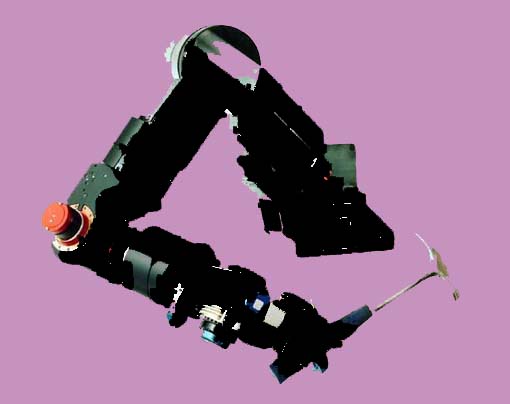
Oswald Wieners Tecno Adaptic
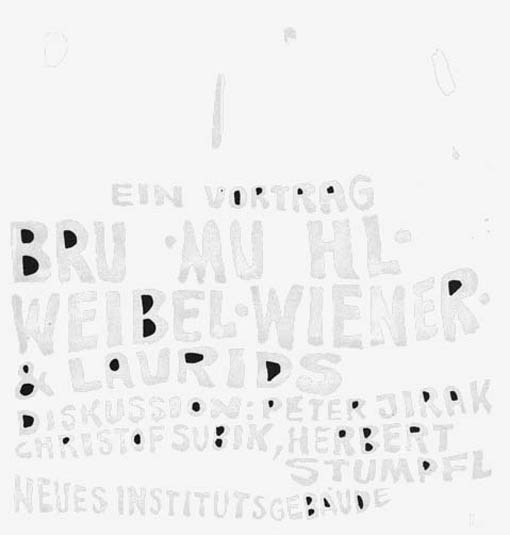
(I See Gerhard Rühm "über den inventionismus" in ‚marc adrian inventionen', edition neue texte, Linz 1980, p 85-90.
(II for an exhibition of Adrian's sculptural work in the gallery "Junge Generation" on Börseplatz in Vienna's first district in 1960 Oswald Wiener wrote a very interesting text for the opening, which has been lost over the times.
(III The reviewer owned a 16 mm sound projector and became the projectionist at some shows of the avant-garde.
(IV See his contributions about Ernst Schmidt jr. in the distribution catalogue "Austria Filmmkaers Coop", Wien 1989; his essay ‚Rekonstruierte Kinematografie' in "Avantgardefilm Österreich. 1950 bis heute", eds. A. Horwarth, L. Ponger and G. Schlemmer, Wien 1995, pages 48 to 59 about Schmidt jr.
(V"EXPORT LEXIKON. Chronologie der bewegten Bilder bei VALIE EXPORT" ed. Sylvia Szely, Wien 2007. I reviewed this well done publication on ‚/export/export.html
( VI The reviewer met Maria Lassnig 1960; much later our association "Austria Filmmakers Coop" could assist her in preserving the negatives of her earlier work.